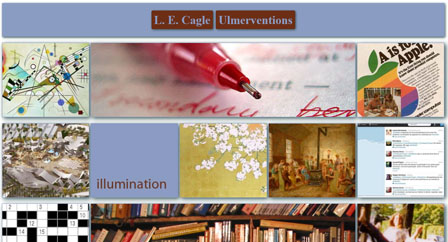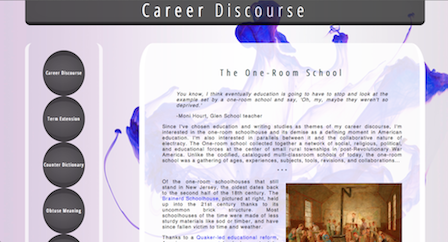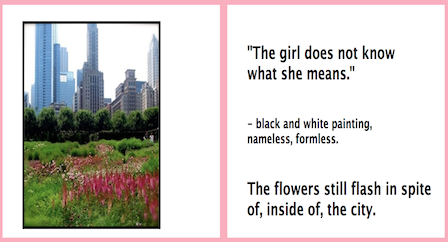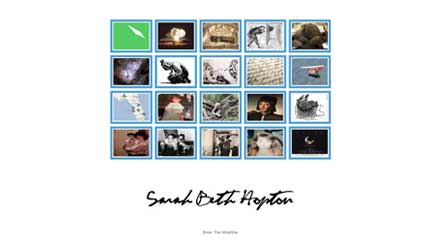Our [Electrate] Stories
Explicating Ulmer's Mystory Genre
Marc C. Santos, Ella R. Bieze, Lauren E. Cagle, Jason C., Zachary P. Dixon, Kristen N. Gay, Sarah Beth Hopton, Megan M. McIntyre
Reflections
The following sections share student responses to six questions regarding their experiences working with Gregory L. Ulmer’s (2003) mystory genre:
- What work does a mystory do?
- Did you experience an aha moment during your mystory process?
- Does the mystory realize Ulmer’s aspirations?
- Can/should you learn Ulmer while learning HTML and CSS?
- Should a mystory be public or private?
- What else would you like to say?
These questions were distributed at the end of the project during a Fall 2012 graduate seminar on New Media Production at the University of South Florida, before students agreed to help put together this manuscript. Student responses were collected and synthesized. We hope these sections help inform and prepare instructors interested in experimenting with Ulmer’s mystory genre. The images on the right serve as links to students’ mystory projects.[12] Given the rather personal nature of the mystory genre, we have refrained from offering a direct analysis of the mystories themselves. In the final recommendation section, Marc C. Santos further synthesizes and responds to many of the points raised by his co–authors in their reflections. We hope these reflections and Santos's responses inform and prepare instructors interested in experimenting with the mystory genre.
The first question “what work does a mystory actually do?” riffs off of Ulmer’s (2003) introduction to Internet invention, in which Ulmer related telling his pragmatic father (proud possessor of a degree in Civil Engineering) of his decision to change his major from Economics and Political Science to English. The decision was not well received. For his father, “real work added value to the world by taking something and making it useful to society,” something to which the poet had no claim (Ulmer, 2003. p. 2). This personal scene provides a sense of the purpose that unites all of Ulmer’s work—the line between art and instrumentalism, between exploring our values and creating objects we value. This is yet another layer of Ulmer’s electrate project, the priority of the aesthetic over the rational, in addition to the socio-expressivist dimensions we elaborated in the previous section. This question, presented to the students before they saw any parts of this manuscript, attempts to solicit their insight on the usefulness of Ulmer’s idiosyncratic pedagogy.
Similarly, the next two questions are entangled with this webtext’s earlier explication of Ulmer’s socio-expressivist pedagogy, exploring whether students experienced the stinging aha moment or whether they believed Ulmer’s electrate project lived up to its ambitions.
The fourth and fifth questions are both logistic and came up during class discussions in which students voiced some frustrations. The fourth question, “can/should you learn Ulmer while learning HTML and CSS” highlights the theoretical complexity of Ulmer’s project; those unfamiliar with Ulmer, or without a strong background in 20th-century postmodern theory, might find Ulmer’s text dense or even impenetrable. Of course, this complexity is amplified by the obvious difficulty of learning web languages. The fifth question, “should a mystory be public or private,” explores the extent to which students can/should be compelled to reveal themselves online. As will become clear, this question might be the most critical of all, soliciting the widest range and most intriguing of all responses.
The open-ended sixth question “what else do you want to say?” provided students an opportunity to comment on the project in ways that could not be anticipated. The range of thought demonstrated in these responses indicates the wide applicability of the mystory project and its relevance to a number of theoretical and/or critical orientations.





